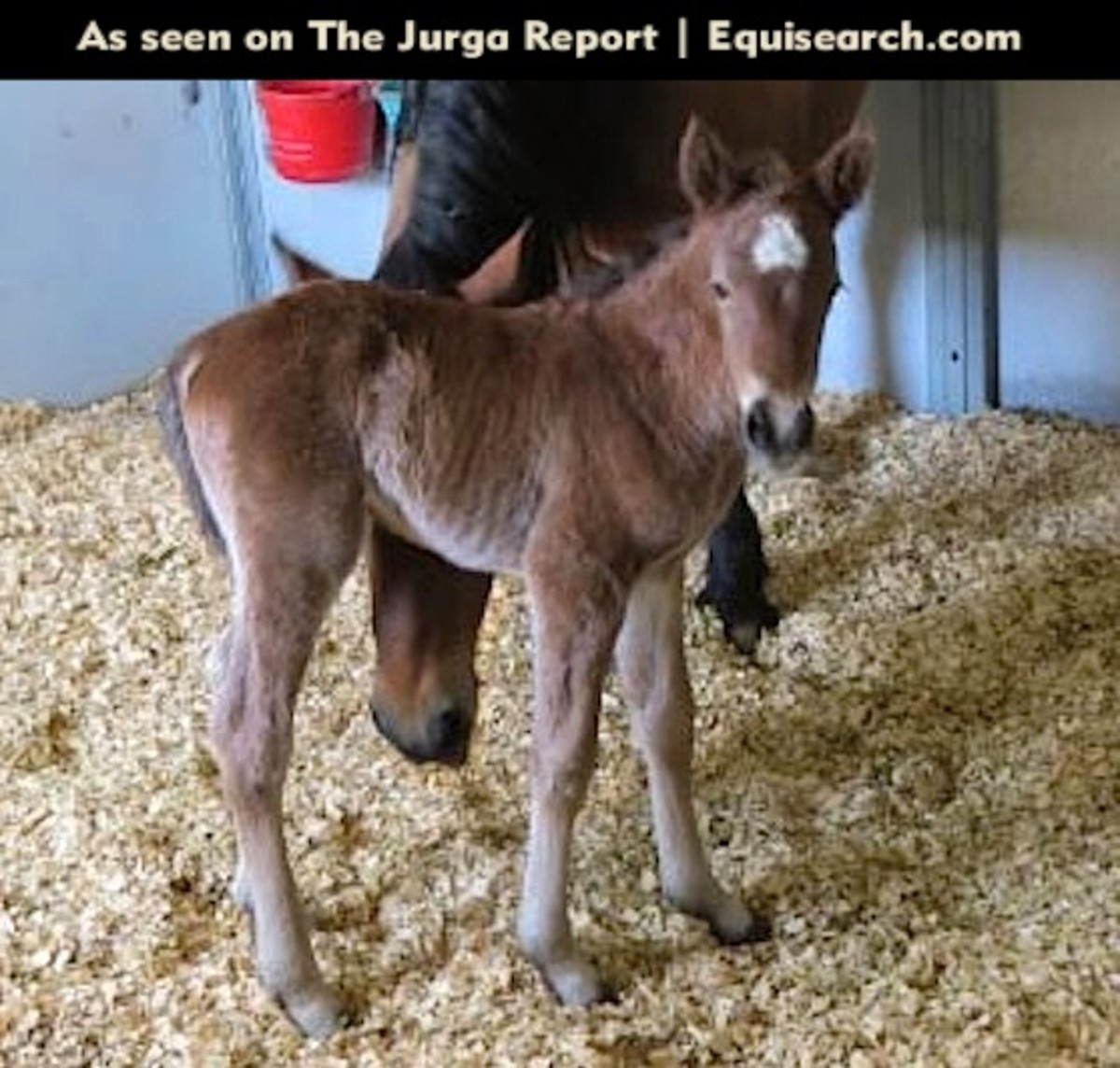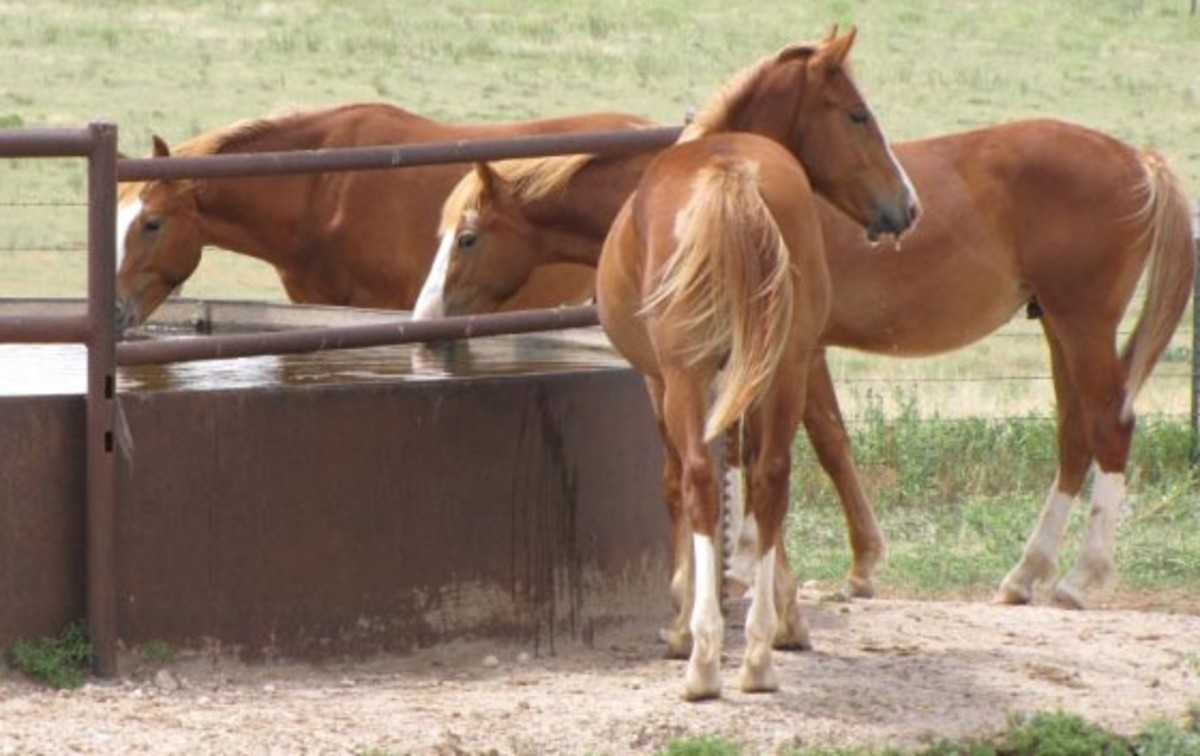Equine Reproduction Milestone: First Clone-to-Clone Mating Produces a Foal Who Is Born to Buck
- March 10, 2017
- ⎯ Fran Jurga

Of all the things that people said would happen if cloning was allowed, few have. “Frankenhorse” just hasn’t happened. Most of the horse world has just shrugged off cloning as old news. Meanwhile, more horses are being cloned all the time.
Clones are making news now by breeding to each other; it happened in Texas last year and the resulting foal has just been born. But stand back! This baby is bred to buck!
Not all of the clones are genetic duplicates of Olympic champions. Some have more humble origins but are valuable in ways you might never have considered.
Rodeo stock has been an area where cloning has flourished. Rodeo bulls, in particular, have been cloned; five clones were allegedly in the chutes at the National Finals Rodeo in Las Vegas in 2012, and two of them were said to have been clones of the great bull Houdini. Bucking horses were not far behind.
That was the case with Go Wild, a famous world champion bucking stock gelding. Go Wild’s last trip to Las Vegas was when he was 25 years old…and he was still bucking like a champion.
Cloning technology was used to collect DNA tissue from the 3/4 draft gelding when he was 33 years old. The DNA and tissue weren’t used until after he died, but the tissue was sufficient to produce three clones: Go Right, Go Left, and Go Strait. And once Go Wild was cloned, and the resulting colts matured, those ungelded clones could be bred. And that’s really where this story begins.
Who would be the ideal mare to breed to Go Wild?

A match was made in rodeo stock heaven when one of Go Wild’s clones was bred to a clone of three-time world champion bucking mare Spring Fling. According to the Professional Rodeo Cowboys Association (PRCA) she was already PRCA Bareback Horse of the Year when, in 1999, her owners moved her over to the saddle broncs where she won Saddle Bronc Horse of the Year in 1999 and 2000, as well as Saddle Bronc of the National Finals Rodeo in both 2001 and 2002.
But Spring Fling is not fertile–at least not until she was cloned and her filly clone was able to be bred. The real Spring Fling is still alive, as is her dam, who now resides in Texas.
Watch rodeo superstar Ty Murray ride Spring Fling in 1999:
[VIDEOSINGLE type=”youtube” keyid=”cTHtOuMR3Qc”, width=”560″, height=”344″]
Between the sire and the mare, the two champions were in the National Finals Rodeo 13 times.
The three clones of Go Wild and the lone clone of Spring Fling are all four years old this year, and live in Texas.
Gregg Veneklasen, DVM, owner of Timber Creek Veterinary Hospital, in Canyon, Texas is a leading authority on cloning and, this weekend, was as proud as a new father himself. Which, in a way, he was, since the clones of both Go Wild and Spring Fling, as well as this new filly, came from his hospital.
Veneklasen’s plan began with the collection of semen from Go Strait, one of the three Go Wild clones. Go Strait’s semen was used to artificially inseminate the Spring Fling clone. After confirming that she was in foal, Veneklasen flushed the clone’s uterus and transferred the embryo to a draft horse mare, who carried the foal to term. The 120-pound filly was born at 8:00 p.m., Texas time, on Saturday night.
The veterinarian told?The Jurga Report that the surrogate mare had been rescued from a PMU herd; her fate at a Canadian slaughterhouse was bypassed so she could enter the clone-breeding program as the carrier mare. “She cost $80,” the veterinarian remarked.
The newborn filly will be destined to compete as a bucking horse, and will be bred, as well. “It will be up to her to prove herself,” Veneklasen said.
What’s next for the Spring Fling clone who is genetically this filly’s mother? She’ll have two more foals this year–or, rather, will produce two more embryos, which will be carried to term by surrogate mares in Texas. One of her foals is by the famous paint bucking horse “Painted Valley”.
In all, Veneklasen says that he has delivered 167 clones of horses at his hospital. Among the horses he reports as cloned are most of the champion showjumpers in the world. He reported that Sapphire, McLain Ward’s stellar partner, has now been cloned. “We’ve done the top horses of every breed and sport, and clones are accepted by the Federation Equestre Internationale (FEI) and most breed organizations,” Veneklasen said.
But don’t look for Sapphire’s clone in the show ring at the next Olympics–or even the one after that. “Clones are simply too valuable to compete,” the veterinarian added.
While Timber Creek is the center of commercial horse cloning in the United States, the actual cloning process happens in Canada. Cloning requires oocytes, or immature egg cells, which are harvested as a by-product of horse slaughter from the uterus of a mare by the genetic technology firm Viagen. Since horse slaughter is not conducted presently in the United States, sourcing oocytes for laboratory work is done in Canada.
It will be a few years, but don’t be surprised if you are watching the NFR in a few years and you hear about a new champion by a gelding out of a sterile mare. You’ll know who it is: the newsmaker “homebred” offspring with two clones for parents. She’s a first, and not likely to be the last.





